Abstract
The finding that the serum of apparently healthy rabbits fixed complement with rabbit liver and kidney has been confirmed. Experimental infection of rabbits with Eimeria stiedae, the cause of hepatic coccidiosis, led to a rise in the titre of serum complement-fixing factors. The rise was statistically significant 14, 21 and 28 days after infection. The factors were regarded as antibodies because they behaved as macroglobulins on diethylaminoethyl—cellulose chromatography and sucrose gradient centrifugation, and as autoantibodies because they fixed complement with the kidney of the rabbits in which they occurred. The antibody reacted with widely distributed antigen(s) with high activity in brain and low activity in skeletal muscle. The possibility that coccidial infection may be responsible for the natural autoantibody of rabbits is discussed.
Full text
PDF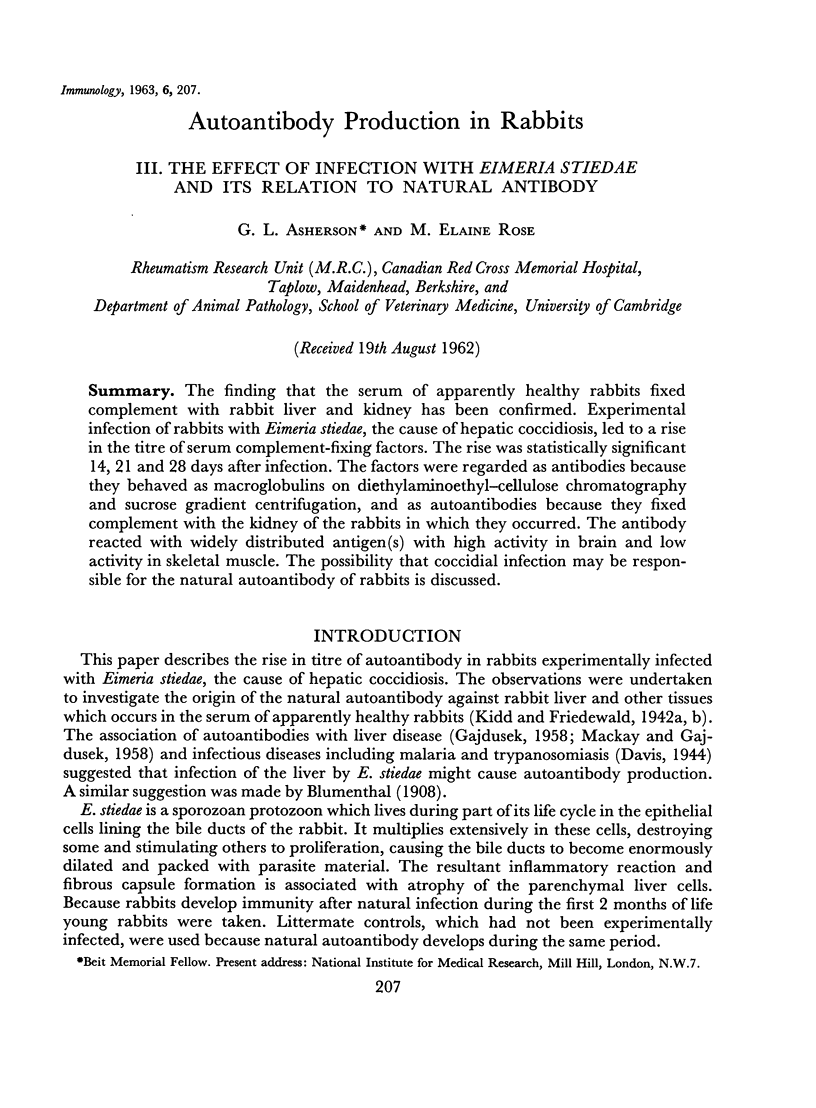
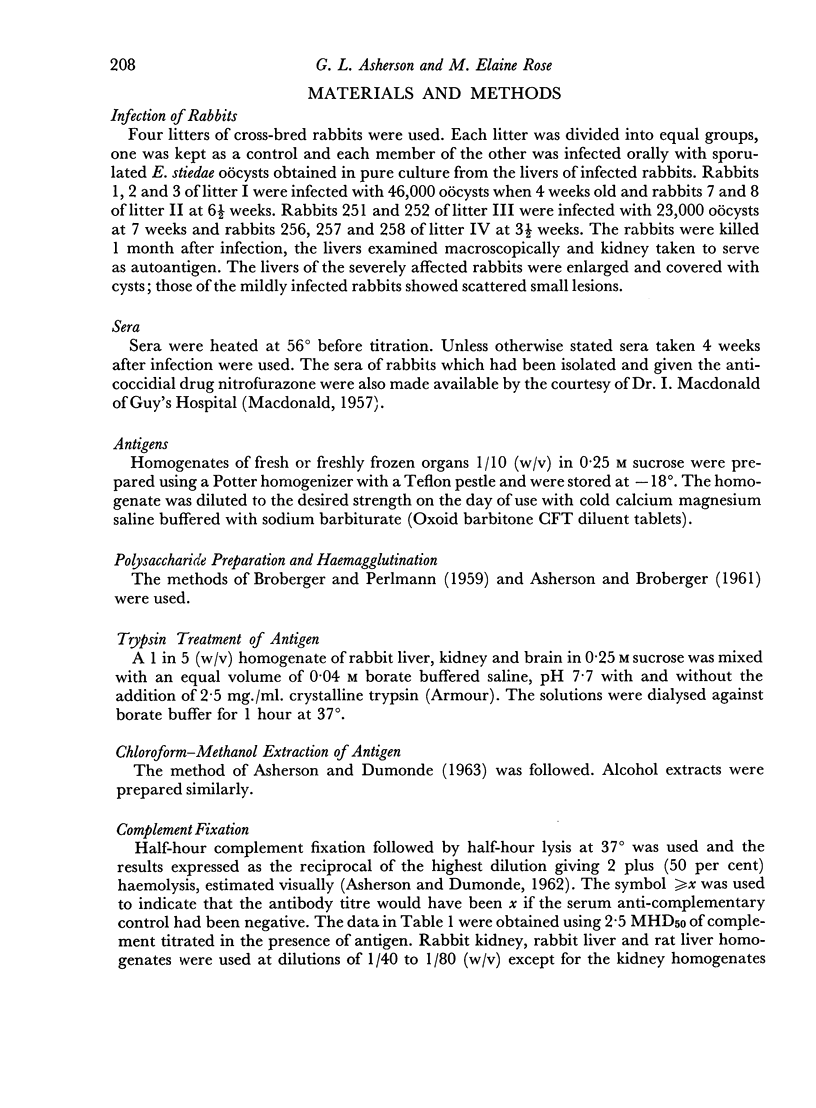
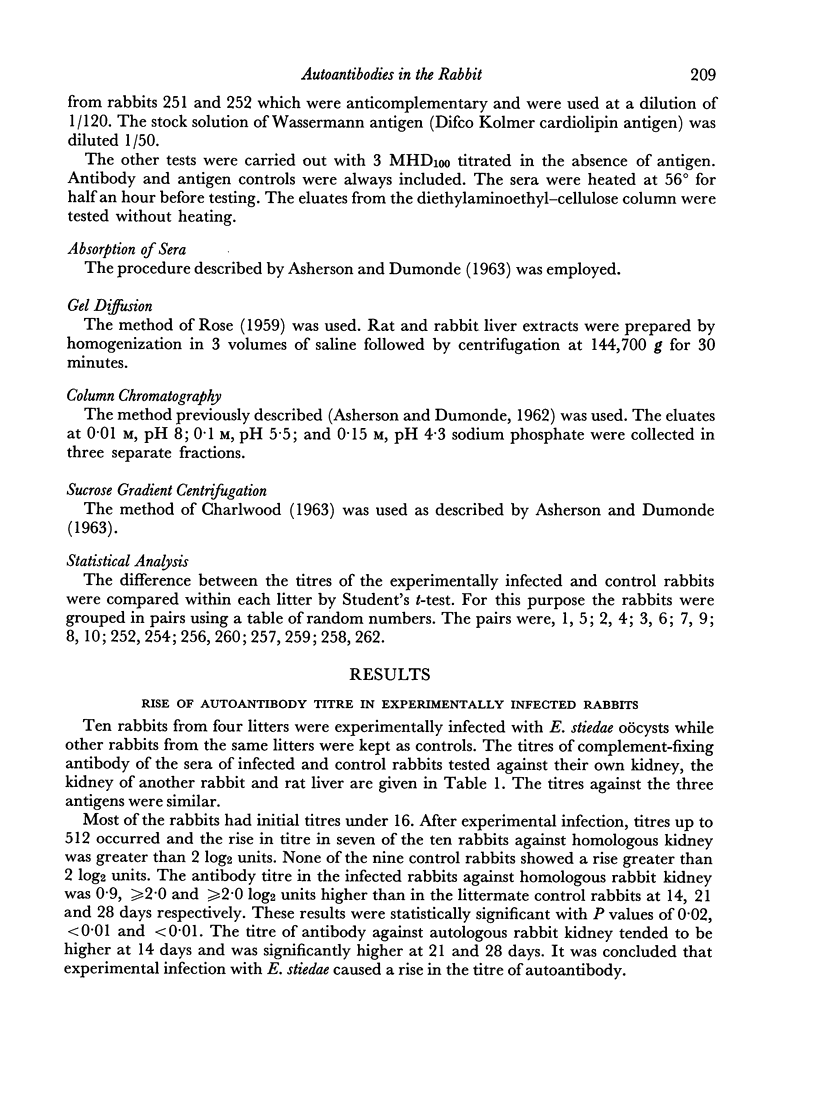
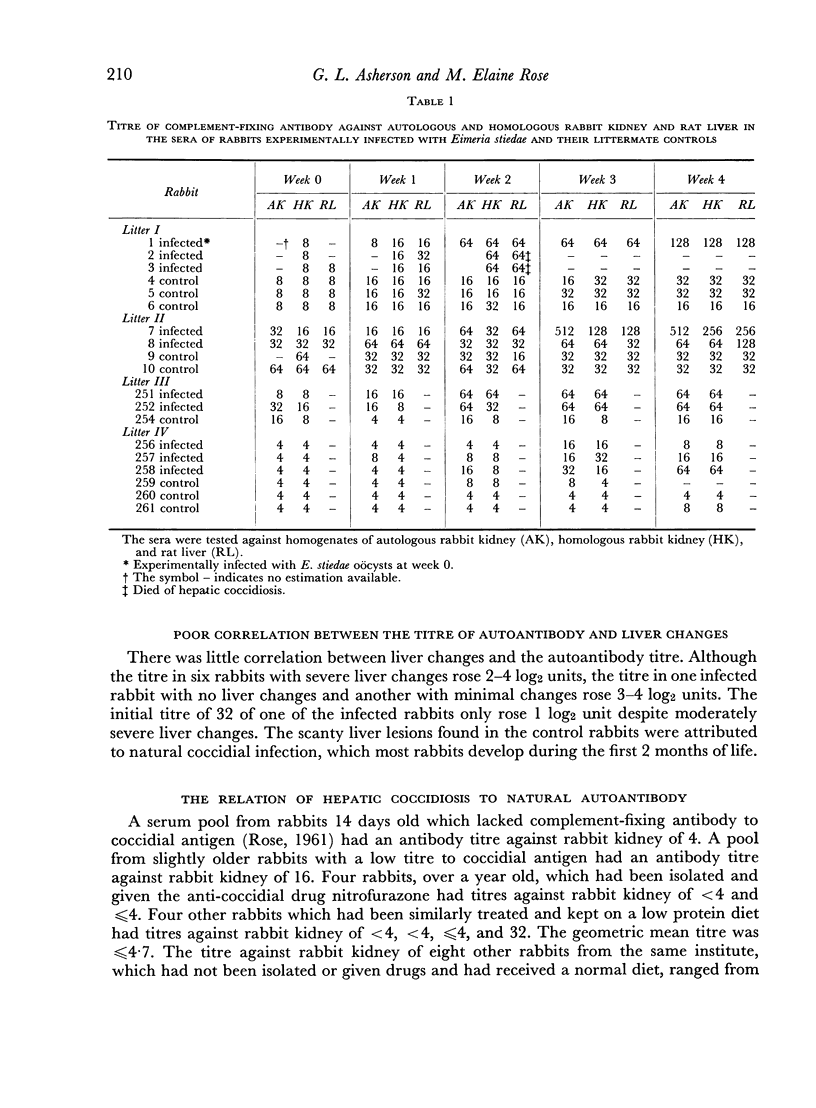
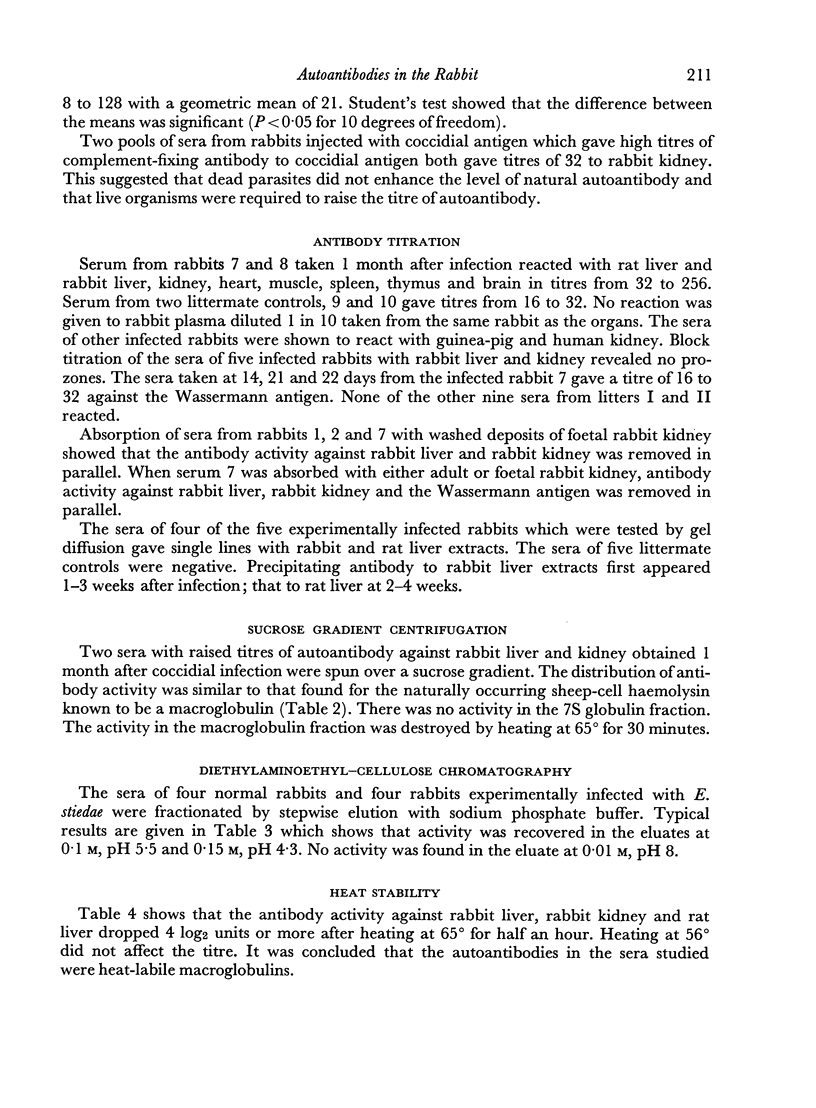
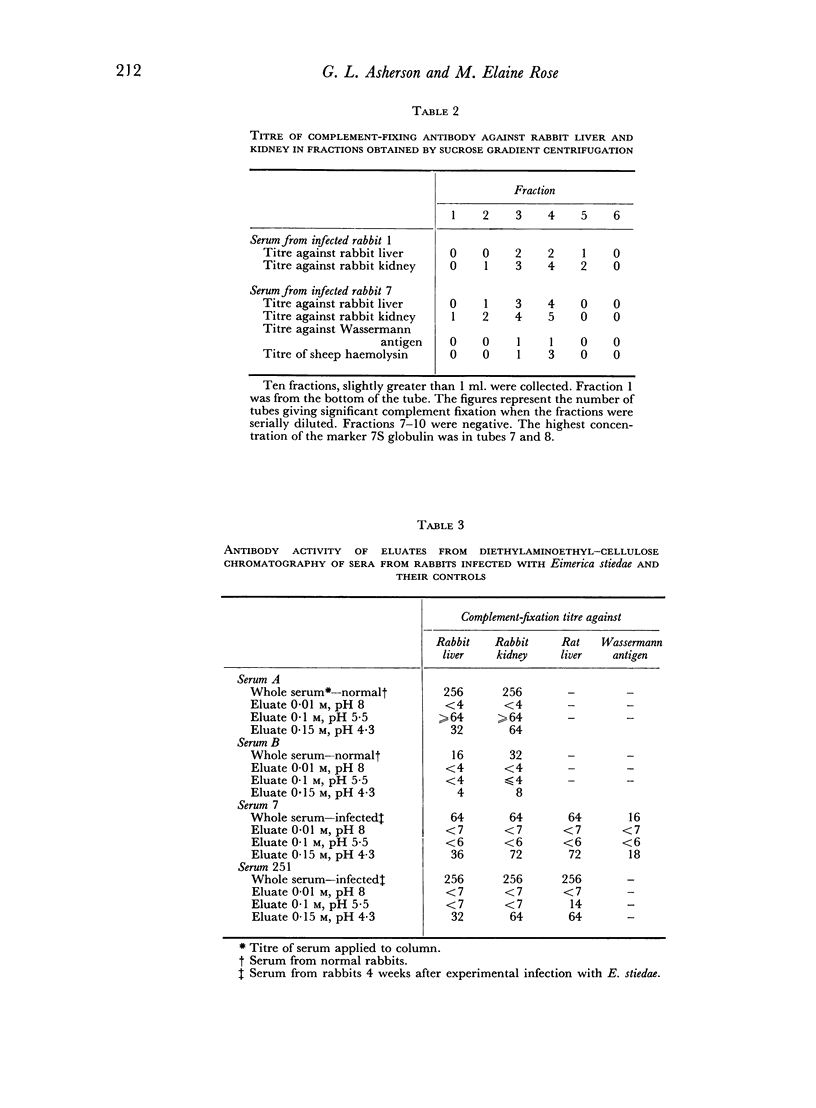
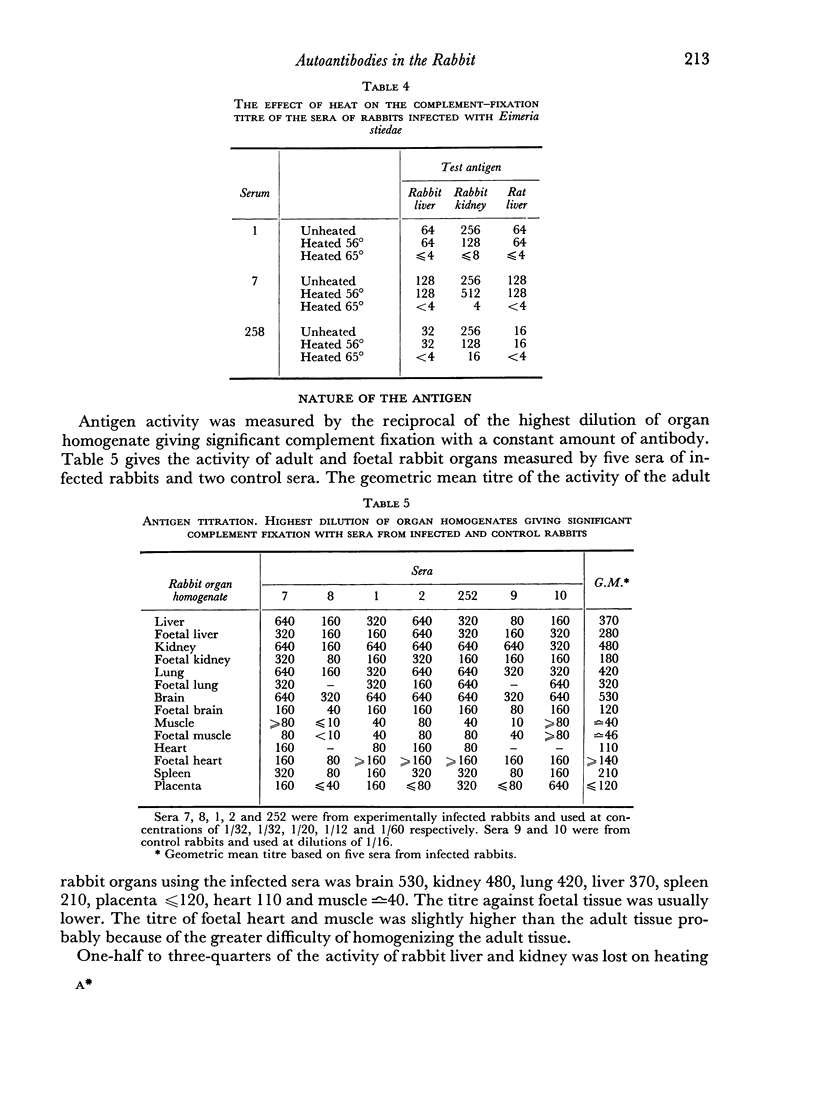
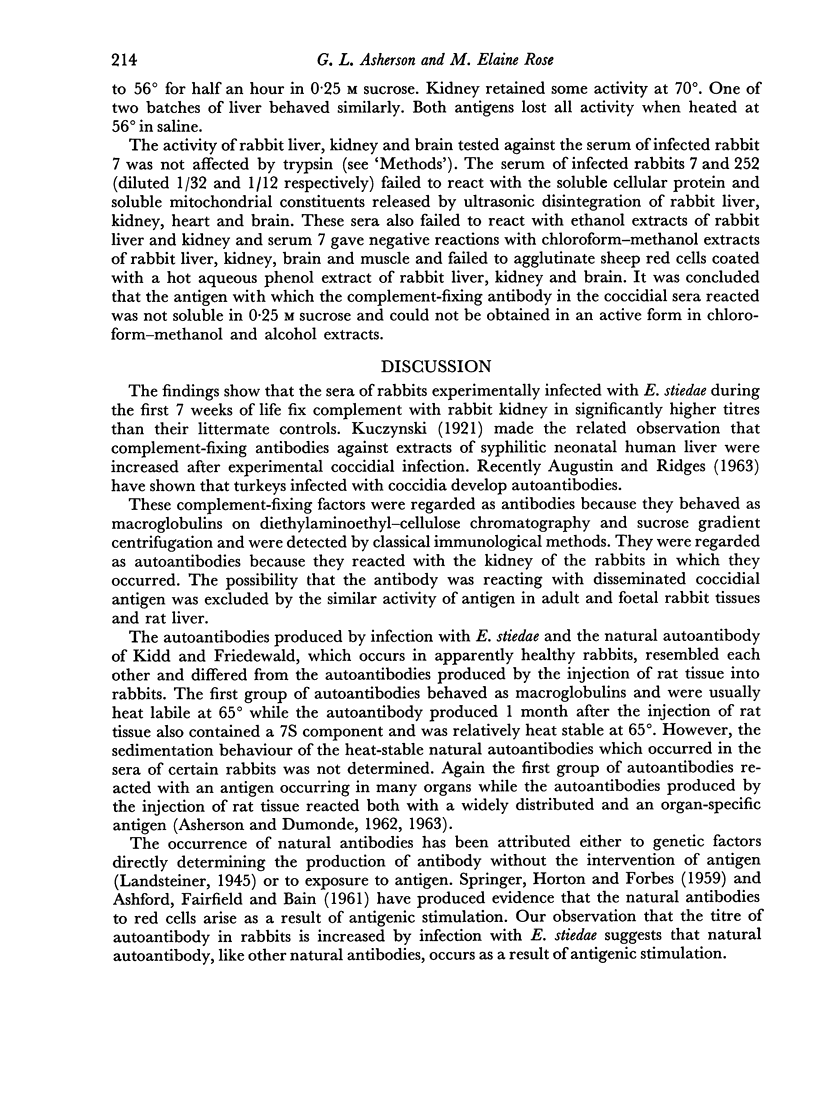
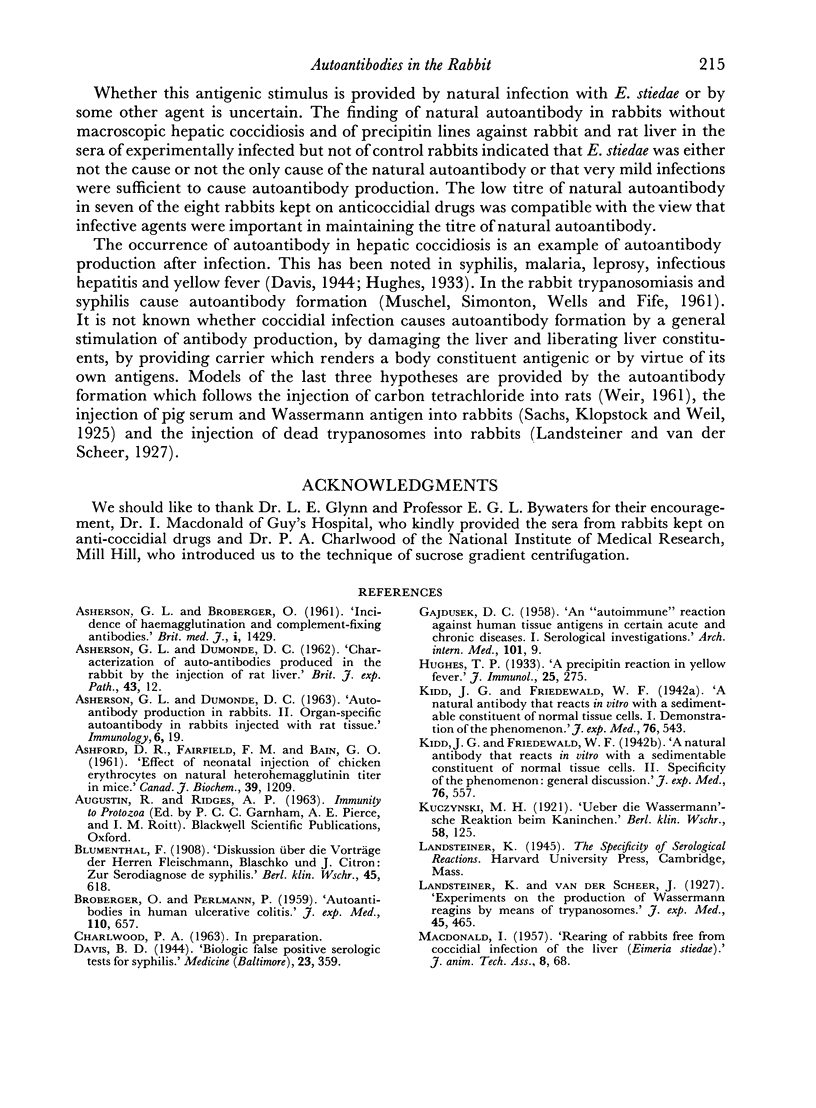
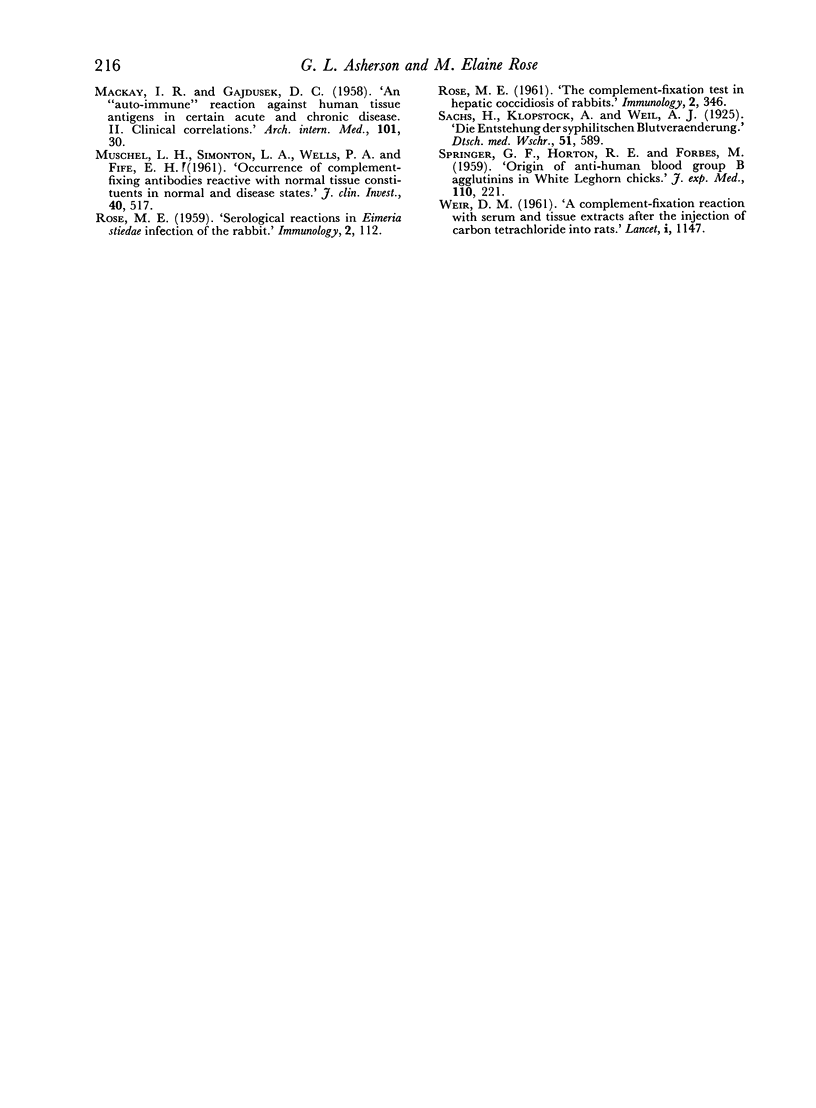
Selected References
These references are in PubMed. This may not be the complete list of references from this article.
- ASHERSON G. L., BROBERGER O. Incidence of haemagglutinating and complement-fixing antibodies. Br Med J. 1961 May 20;1(5237):1429–1433. doi: 10.1136/bmj.1.5237.1429. [DOI] [PMC free article] [PubMed] [Google Scholar]
- ASHERSON G. L., DUMONDE D. C. Autoantibody production in rabbits. II. Organ-specific autontibody in rabbits injected with rat tissues. Immunology. 1963 Jan;6:19–29. [PMC free article] [PubMed] [Google Scholar]
- ASHERSON G. L., DUMONDE D. C. Characterization of auto-antibodies produced in the rabbit by the injection of rat liver. Br J Exp Pathol. 1962 Feb;43:12–20. [PMC free article] [PubMed] [Google Scholar]
- BROBERGER O., PERLMANN P. Autoantibodies in human ulcerative colitis. J Exp Med. 1959 Nov 1;110:657–674. doi: 10.1084/jem.110.5.657. [DOI] [PMC free article] [PubMed] [Google Scholar]
- GAJDUSEK D. C. An autoimmune reaction against human tissue antigens in certain acute and chronic diseases. I. Serological investigations. AMA Arch Intern Med. 1958 Jan;101(1):9–29. doi: 10.1001/archinte.1958.00260130023003. [DOI] [PubMed] [Google Scholar]
- MACKAY I. R., GAJDUSEK D. C. An autoimmune reaction against human tissue antigens in certain acute and chronic diseases. II. Clinical correlations. AMA Arch Intern Med. 1958 Jan;101(1):30–46. doi: 10.1001/archinte.1958.00260130044004. [DOI] [PubMed] [Google Scholar]
- MUSCHEL L. H., SIMONTON L. A., WELLS P. A., FIFE E. H., Jr Occurrence of complement-fixing antibodies reactive with normal tissue constituents in normal and disease states. J Clin Invest. 1961 Mar;40:517–524. doi: 10.1172/JCI104279. [DOI] [PMC free article] [PubMed] [Google Scholar]
- ROSE M. E. Serological reactions in Eimeria stiedae infection of the rabbit. Immunology. 1959 Apr;2(2):112–122. [PMC free article] [PubMed] [Google Scholar]
- ROSE M. E. The complement-fixation test in hepatic coccidiosis of rabbits. Immunology. 1961 Oct;4:346–353. [PMC free article] [PubMed] [Google Scholar]
- SPRINGER G. F., HORTON R. E., FORBES M. [Origin of anti-human blood group B agglutinins in white Leghorn chicks]. J Exp Med. 1959 Aug 1;110(2):221–244. doi: 10.1084/jem.110.2.221. [DOI] [PMC free article] [PubMed] [Google Scholar]


